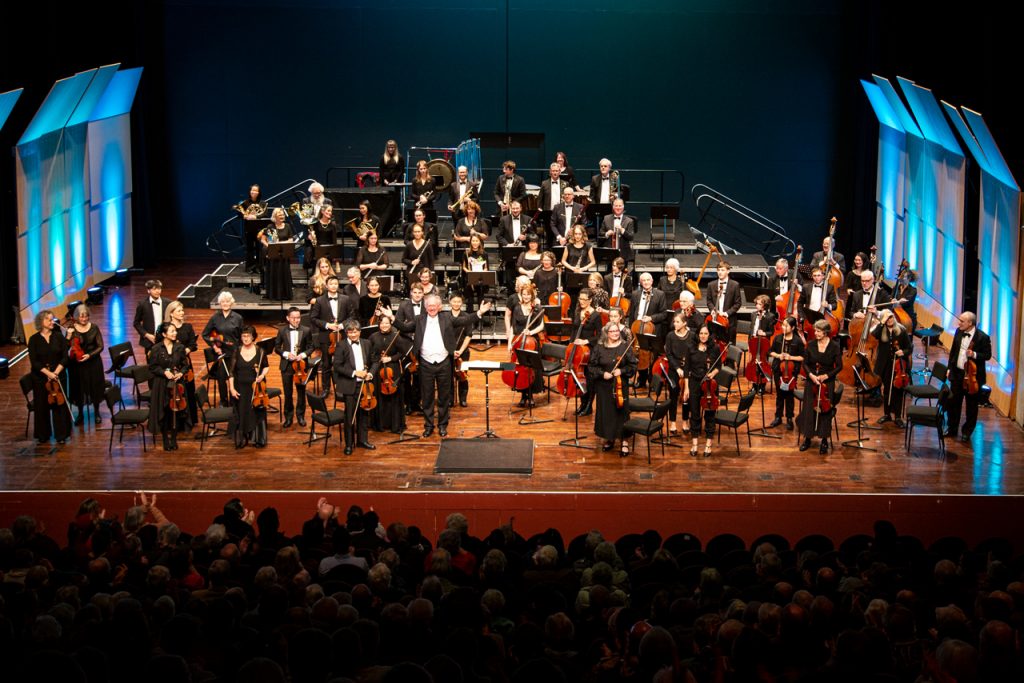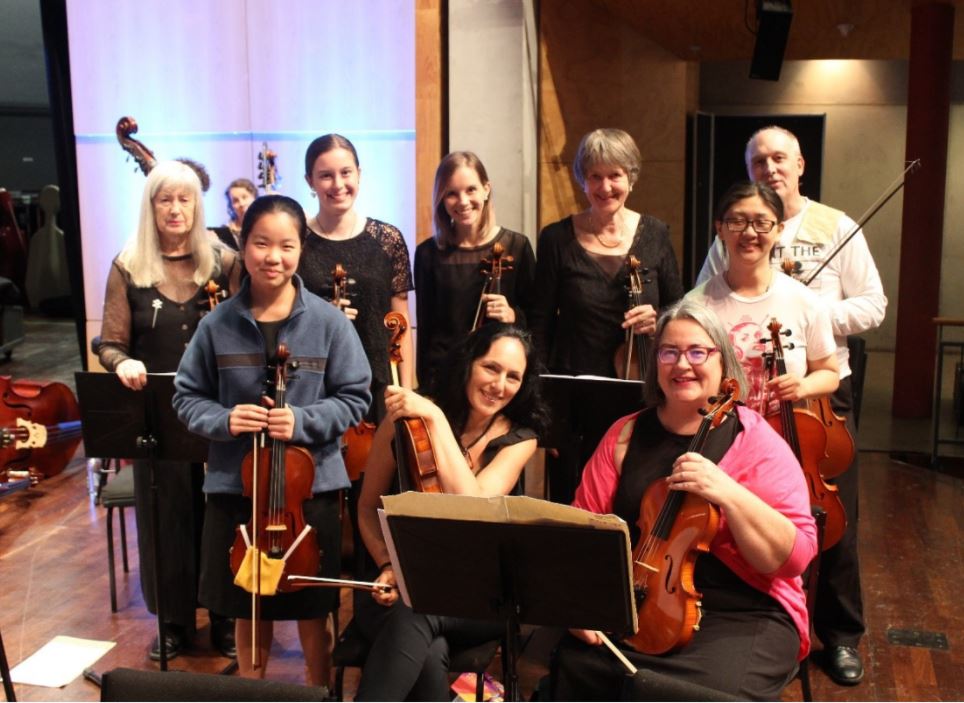Photo above, from left to right: Christine Breeden, Sarah Thompson and Yih-Hsin Huang in the Brahms Violin Concerto Concert this year (John Jensen also played, but is not shown here).
Written by Kate Candy Colbert
Those shiny brass instruments at the back of the orchestra on stage are known as the Horn and Brass Sections of the Orchestra. Each of these instruments are made of a type of Brass which connects them overall as a section in the orchestra, however the French Horns are considered unique in their contribution to the orchestra and are referred to as The Horn Section.
The Horn Section
In early symphonic orchestral scoring, it was normal to have a pair of French Horns who would typically play long and sustained lines of harmony. By the late nineteenth century composers orchestrated for four horns and this symphonic practice persists to this day. The French Horn has a warm and velvety sound and is considered the “bridge” between the woodwind and brass instruments and suits soaring above the strings of the orchestra.
Our Principal Horn Player Sarah Thompson

I asked Sarah the following questions to get some insight into the Horn section.
Q. What makes the French Horn unique even though it sits with other brass players in the orchestra?
The horn is a bit of an anomaly. We’re considered to be part of the brass section. The horn is made of brass, we work with the brass players in a lot of orchestral works, and we play in a brass quintet. However, we’re also considered to be part of the woodwinds and we play in a wind quintet which is one of each of the four woodwinds plus horn. Much of the orchestral writing for horns works with the woodwinds and our sound is well suited to this. So we’re a bit of a social misfit. It makes things harder, but it makes things more interesting too. As a section leader of the horns, it’s about making sure the section is part of both the woodwind and the brass sections and kind of being the go-between.
Q. Why do French Horn players put a hand in the bell of their instrument?
Horn players slightly cup their right hand and put it in just a small way into the bell. Moving the hand slightly can alter the pitch and the tone. It’s what gives the horn its very warm tone.
If we push that right hand further into the bell, we can produce a buzzing, metallic tone which is a semitone higher than normal. It’s a technique called hand stopping, slightly different from muting, and it’s a clever effect which is occasionally used by composers such as Vaughan Williams “The Wasps”.
Q. Why do French Horns face backwards?
The horn originated as a hunting horn. Old paintings of riders on horseback depicted the leader of the hunting party with a horn sitting around his shoulder on a rope with the bell facing behind him. Supposedly the bell faced pointed behind him to ensure that the horn could be heard by the rest of the pack and not scare away the prey! The modern French Horn is held facing backward which causes some unwanted complications such as whether the bell faces a solid wall or something softer as it directly affects the sound projection of the instrument.
Q. Why is the French Horn mouthpiece so small?
I believe it is one of many things which helps in making the horn such a fiend of an instrument to play!
Q. Did the French Horn originate in France?
No! The Horn originated in Germany. The French call it “cor d’harmonie” so they are are not even making a false claim about it. I gather the term French horn was coined by the Brits who thought that is looked like the hunting horns used in France in the 1600’s.
Thanks Sarah!

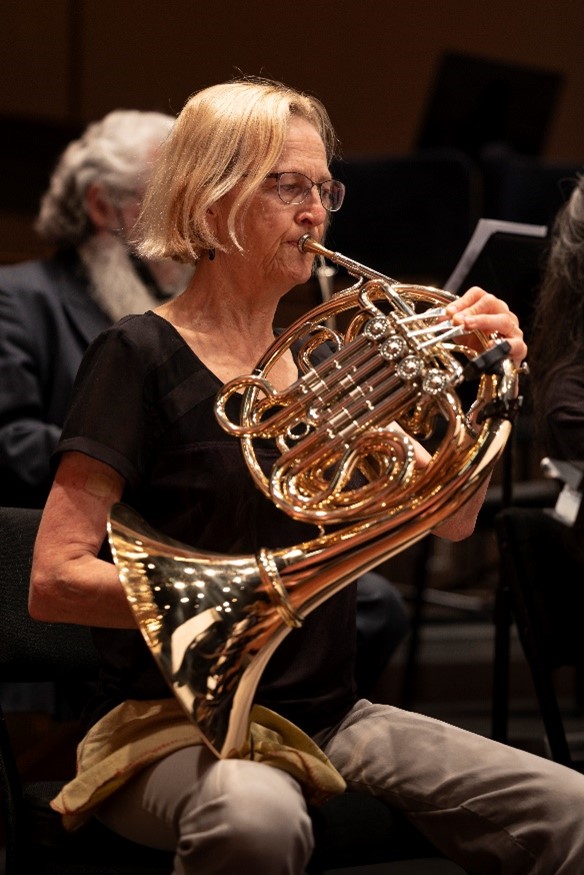
John Jensen, our Horn player famous for appearing in a TV ad!
Christine Breeden
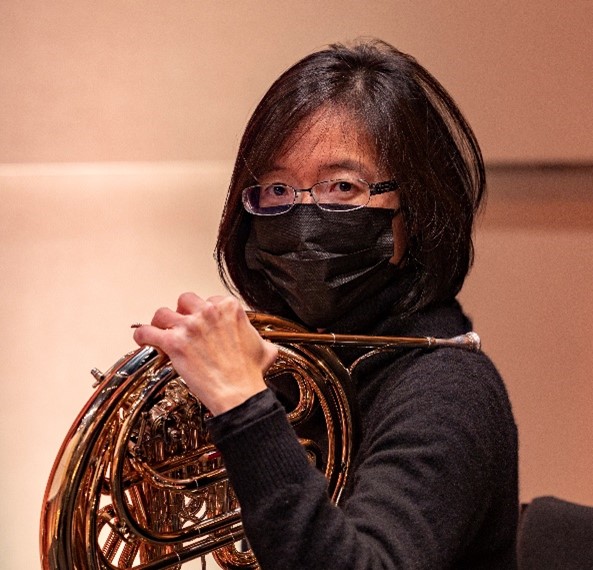
Yih-Hsin Huang
I asked four of the Horn players a few questions…
Q. When did you first play in MSO?
Yih-Hsin: 2011.
Sarah: Way back near the beginning about 1998.
John: In 1993 in the very first concert!!
Christine: I first joined the MSO in 2009.
Q. What is your favourite piece of music to play in an orchestra?
Yih-Hsin: Prokofiev’s Romeo and Juliet. Beethoven’s 6th Symphonic. Tchaikovsky’s 5th Symphony. Anything Sibelius. And many more. Every piece is an exciting journey.
Sarah: I think it would have to be the Dvorak Symphonies. They have great wind and Horn parts and such joyous music. Brahms is divine for a horn player as well.
John: All the Romantics: Beethoven, Tchaikovsky, Mahler, Bruckner etc.
Christine: I love playing anything where the two horns (or four horns) play together, and I tend to enjoy playing Romantic period music or C20th century/C21st century works because the horn writing will be fully chromatic. I absolutely love playing a Tchaikovsky symphony such as the 4th one in our end of year concert.
Q. Brag about your instrument. Tell us why you love it!
Yih-Hsin: It sounds glorious. The timbre speaks the grandeur of the Grand Canyon, Gobi Dessert or Mount Cook. It also murmurs the sweetest words or delivers the righteous sound of reason. Yet it can be so treacherous and at times very unforgiving.
Sarah: The French Horn has a beautiful rich sound and heaps of character. Horn players are quirky and interesting. Lots of laughs!
John: Nothing I can say here except I just do!!
Christine: I absolutely love the sound of the French Horn. It is rich, mellow, fluid, and can be brassy sounding. There are orchestra parts for horn from Baroque through to contemporary. The horn is also used in Symphonic Bands, as well as in both Brass and Woodwind ensembles. Yay! Not much sitting around doing nothing for horn players!
Extras!
Christine: It was because of Howick Orchestra started by Terry and Christopher Spragg, that I got to learn the French Horn and I will always feel gratitude for that.
Christine: I love playing second horn specifically, getting all the wonderful rich harmony parts with the first horn. My job is to support the principal player and make her sound even better, so I need to listen to everything she does and match her sound quality, articulation, phrasing, intonation, and follow her as closely as possible.
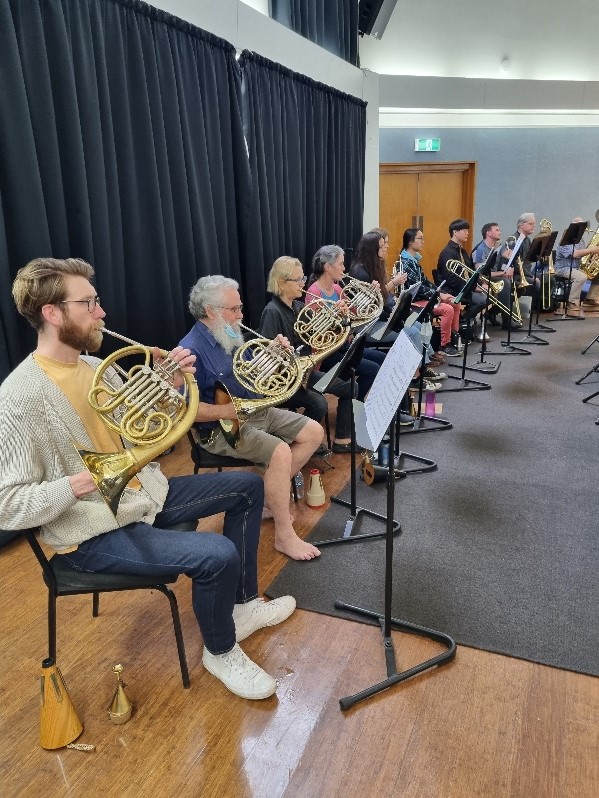
Scheherazade rehearsal at Te Tuhi (Henry Swanson far left).
Photos by Randy Weaver


